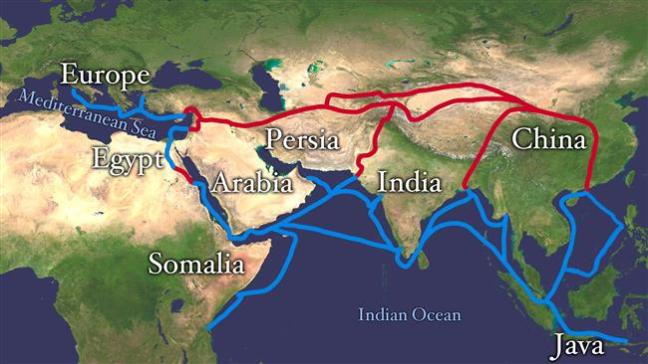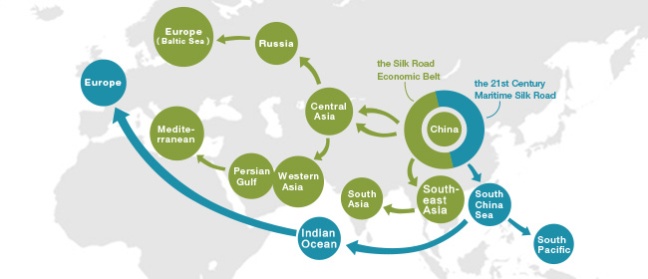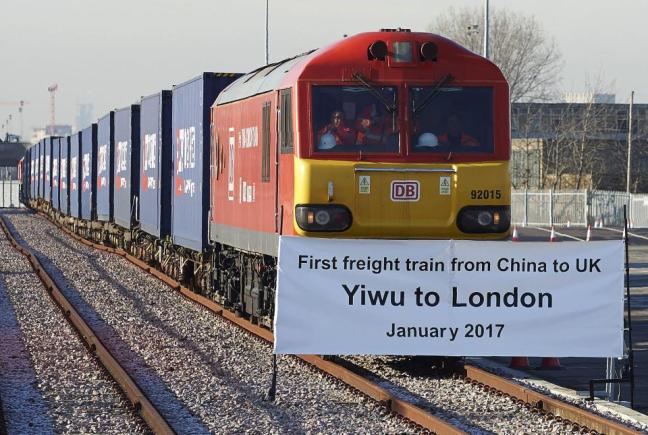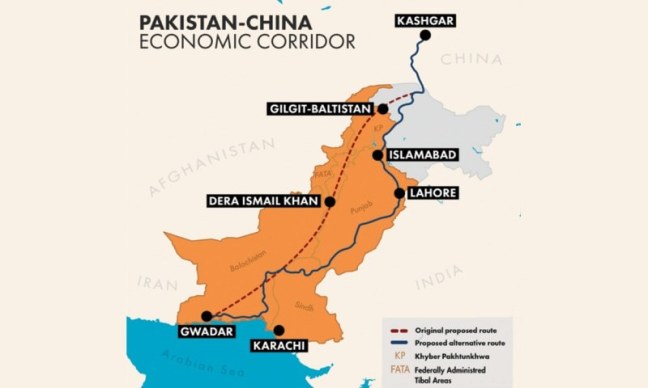“History repeats itself”- this quote has time and again imposed itself and proved its authenticity throughout the history, sometimes to boon and other times to doom. And it is again showing its buoyant characteristics through the 21st Century SILK ROAD, under One Belt One Road initiative of China.

History Rewind: Silk road or route was an ancient network of trade routes that was central to cultural interaction for centuries and connected East with West, expanding from Korean region to the Mediterranean Sea. It was the main channel for trading and propagating of ideas, philosophies and religion. The credit of widespread faith in Buddhism also goes to this route only. At times, the route also played its role in population control by spreading diseases.
The name of the road comes from the natural fibre “Silk”, as its trading was most lucrative, only being produced in China at that time. Silk road’s importance declined and got disintegrated in 1700’s after fragmentation of kingdoms along its route, as of Mongols, rising rivalry among them, discovery of safer & cheaper mode of transportation through sea ,and Persian’s learned mastery in sericulture reducing imports of silk from east.

History Repeats: One Belt, One Road – An initiative taken by China in 2013, under the leadership of Premier Xi Jinping to reconstruct the international trade routes on the lines of ancient Silk Road; including land as well as Sea route. Silk Road Economic Belt (Land route) + 21st century Maritime Silk Road (Sea route) = One Belt One Road (OBOR)

OBOR is an Economic and Diplomatic program which is also been seen as the answer of China to Trans- Pacific Partnership(TPP) of pacific countries, flagged by the USA. TPP is a trade agreement between 12 countries which are Australia, Brunei, Canada, Chile Japan, Malaysia, Mexico, New Zealand, Peru, Singapore and the United States. Though TPP is in cold storage after the US pulled back its agreement to it. Now after US’ withdrawal, other countries such as Chile & Australia are inviting China on board to enhance integration of Asia- Pacific region.

“China’s Belt and Road “Circle of friends” expanding”, the website of Government of China. OBOR’s recent advancements include cargo train reaching Iran and London from China covering 9,600 and 12,000 km in 14 and 18 days respectively. Pakistan is already enjoying economic support from China through $46 billion China-Pakistan Economic Corridor (CPEC) which has been induced under the umbrella of OBOR. Agreement with Russia has given China the doorway to the Arctic Ocean. Prime Minister of Nepal Pushpa Kamal Dahal ‘Prachanda’ also showed interest in joining OBOR formally.
India’s reluctance to join OBOR: India and China are the two countries who are in the race of becoming the 21st-century hegemon and world leader, this further induces angles in an already complexed relationship between them. India’s perception and analysis of OBOR as a threat or opportunity highly influence its decision to join it or not. However, one uncompromisable issue for India is the route of CPEC which passes through the Gilgit- Baltistan region of Pakistan Occupied Kashmir(POK), a disputed territory of Kashmir between India and Pakistan.

CPEC route issue is crucial for India to decide whether to join OBOR or not, the continuity of this deadlock will push India into isolation as more and more countries are joining it and India’s reluctance to join it also poses problems for China to reach Bangladesh, Myanmar and Sri Lanka.
So whether this drive on the super highway will be Silky smooth or not? Let’s wait & watch.

India’s take on CPEC will be interesting once it gets pressurized from its neighbours eyeing the silk route as a gate to growth. The writer is requested to
inform of the current status of the alternative route of corridor in Pakistan by China.
LikeLiked by 1 person
The controversy related to planned and alternative route for CPEC is about shifting route from Balochistan area (neglected & unrested province of Pakistan) to Punjab province (PM Nawaz Sharif’s birth place/ home state). Balochistan leaders reason this decision as a political act against them, however Pakistan government’s version is the difficulty of the terrain and complexities in building of the CPEC in previous planned route.
One thing which we need to keep in mind is that CPEC is not just one road from China to Gwadar port (Built by China) at Arabian Sea side of Pakistan but many, covering every region of Pakistan.
One controversy again rose when their were allgations that Western corridor (through Khyber Pakhtunkhwa) is being re-routed, but the Federal Minister for Planning, Development and Reform for Pakistan, Ahsan Iqbal has declined such allegations.
LikeLiked by 1 person
The controversy related to planned and alternative route for CPEC is about shifting route from Balochistan area (neglected & unrested province of Pakistan) to Punjab province (PM Nawaz Sharif’s birth place/ home state). Balochistan leaders reason this decision as a political act against them, however Pakistan government’s version is the difficulty of the terrain and complexities in building of the CPEC in previous planned route.
One thing which we need to keep in mind is that CPEC is not just one road from China to Gwadar port (Built by China) at Arabian Sea side of Pakistan but many, covering every region of Pakistan.
One controversy again rose when their were allgations that Western corridor (through Khyber Pakhtunkhwa) is being re-routed, but the Federal Minister for Planning, Development and Reform for Pakistan, Ahsan Iqbal has declined such allegations.
LikeLike
Reblogged this on Insight on Kashmir.
LikeLiked by 1 person
Good research
LikeLiked by 1 person